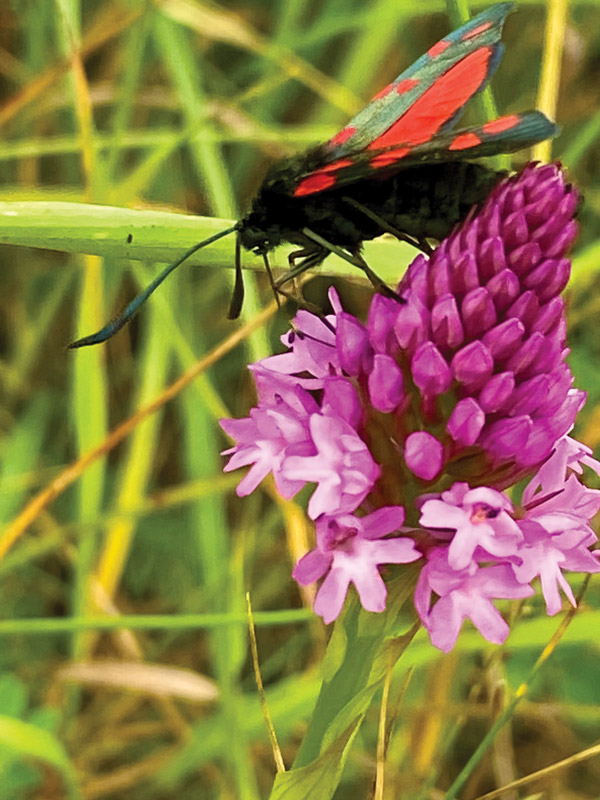If you’re short on entertainment, I suggest you read the Dáil debate on the new Nature Restoration Law from 12 June last (www.oireachtas.ie/en/debates/debate/dail/2024-06-12/5).
This is the first regulation which aims to restore biodiversity in Europe through restoration of ecosystems both on land and sea. It has been described as a historic vote for nature, and will provide us the essential services nature brings to us all in strengthening our food security, providing safe drinking water and building sustainable livelihoods for every European.
The Dáil debate took place just five days before the eventual adoption of the Nature Restoration Law (NRL) by the EU Council on 17 June 2024. In the debate you’ll get a flavour of the Irish fight against the law, ranging from tales of farmer woes from the Healy Raes “breaking bones in the hot sun” as they drained land, to Minister Malcolm Noonan highlighting how thousands of willing farmers are already signed and signing up to nature restoration under various EU LIFE and ACRES projects.
Farmers have been pitched as the ones who’ll be most impacted by the EU Nature Restoration Law. It might surprise you to learn that the law is way broader in its aims than simply rewetting habitats and Irish farmland. The new law will have many positive impacts for nature which in turn will benefit us all, such as saving pollinators, and ensuring cities have enough green infrastructure in place to deal with climate changes. Every community, rural and urban and at national level, will have to report on what we are doing for Irish nature.
The seed and origin of the EU Nature Restoration Law began in 2019 with the EU Green Deal, followed in 2020 by the EU Biodiversity Strategy. The discussion on nature and biodiversity targets then moved to the international policy arena of the Convention on Biological Diversity (CBD), and the global consensus by the Conference of the Parties (CoP 15) around the CBD Global Biodiversity Framework (GBF) 2022 (www.cbd.int/gbf).
Many of the targets of the Global Biodiversity Framework are the same as those in the NRL, so even if the law had failed at EU level, Ireland, the EU and the world had already signed up to the same global targets. What made the NRL so needed, important and powerful, is that it has EU statutory and regulation footing – ie, it’s not just an agreement. Once this new NRL regulation is published formally, it will be directly applicable to all EU member states, and we will have to start to work solidly on its implementation. But that’s OK, because it comes with billions of euros in funding for implementation.
The journey into law for the NRL was a rock and roller coaster ride of highs and lows, as the targets went from the EU to the international arena and back, pillar to post. The ride was breathtaking and nail biting to the very end. Having been passed by the EU parliament, the EU commission and the EU member states, the law looked set to fall very dramatically at the final hurdle at the European Council, through which it had to pass to become law.
The law passed with the narrowest of margins – just 0.07 per cent above the 66 per cent minimum – but pass it did, with 20 member states in support, six against (Italy, Hungary, Netherlands, Poland, Sweden, Finland) and one abstention (Belgium).
Why were so many in Europe afraid of the law? Sweden worried about its forest targets; Poland, Hungary and Finland worried about the costs and finance; the Netherlands worried most as it has the most drained peatlands in the EU; Belgium just worried; and Italy didn’t want any more bureaucracy in its agriculture sector (however, bureaucracy in Italy is mostly Italian made).
One of the main people to credit for getting the law past the finishing post is the brave Environment Minister from Austria, Leonare Gewessler, who went against the wishes of her government and voted in favour. Irish Green Party Ministers Eamonn Ryan and Malcolm Noonan also played a vital role by writing to all the environment ministers across the EU calling for unity on the law to restore Europe’s nature.
As a nation we should be proud of the Irish interventions and strong leadership which helped get the law over the line. It’s a true legacy for nature, and all of life, if we meet all the targets set out.

NEW LAW, NEW ERA
So what have we signed up to with the EU Nature Restoration Law? And is it really that terrifying? The short answer is no; but that’s not to say there won’t be challenges.
The target is to restore 20 per cent of the EU’s degraded land and sea ecosystems by 2030, and all ecosystems by 2050. These are the important habitats set out by EU Habitats Directive classifications such as dune, uplands, lowland hay meadows and peatlands. Given that in Ireland, over 85 per cent of these habitats were assessed as in poor condition, the law’s target is clearly not short on ambition.
Across Europe, the same EU legally-protected habitats are also in poor condition. These must be restored to ‘good’ by 2030, with a target of 30 per cent good by 2030, 60 per cent good by 2040, and 90 per cent good by 2050. All the ecosystems and habitats we need to restore we know about already; as these are already legally designated Natura 2000 sites and EU-protected habitats under the EU Habitats Directive, for which we are already charged to keep in ‘good’ conservation status. The last round of reports on these habitats can be found here: (https://www.npws.ie/ publications/article-17-reports/article-17-reports-2019).
Where controversy around the new law’s requirements does arise is the aim to restore 30 per cent of drained peatlands by 2030, and 50 per cent by 2050. These are the drained peats that the Healy Raes argue have been brought from “brown to green”. However, the government has been at pains to highlight that this target will be met in its entirety on public land, mostly through rewetting of former Bord na Móna land.
The other main targets are to reverse the decline of pollinators, where it is estimated that €5 billion of EU annual agricultural output is directly attributed to free services by pollinators. We are already on board for many of these pollinator targets with the All-Ireland Pollinator Plan and our own National Biodiversity Action Plan, launched in 2024.
For amenity horticulture, the main impacting area of the new NRL will be to greatly increase the green spaces in cities; to have no net loss of green space by 2030; and to greatly increase the amount of tree cover in cites. The urban environment is seen as an important space for nature. Currently 22 per cent of our EU land surface area is parks, gardens, trees and meadows. The aim is to maintain and build to increase this figure of urban greenspace.
I think we’ll all be very happy to help achieve the law’s targets, as they will enhance the quality of our lives in urban areas. Plus the amenity and landscape industry will benefit from the work being generated through landscaping and planting urban areas. A figure of up to 45 per cent of urban areas as green space has been suggested as necessary in order to meet targets.
Under the target for rivers and floodplains, the EU aims to have 250,000 km of free flowing rivers by 2030 – no small feat when it’s estimated that the EU has one million dams, weirs, ramps and other man-made barriers on rivers. Given that we have no shortage of these in Ireland, this free flowing rivers aspect of the law might prove challenging, especially in light of climate change and flooding issues; but it’s not impossible, and at least we now have a plan.
Targets for forests look towards not just the standing stock, but the whole forest ecosystem health. They allow for an increased amount of deadwood for organisms, with the main ambition to plant over three billion trees in Europe by 2030.
We are up and onboard for all of these targets in Ireland already. They are nothing radically new, and definitely nothing to be afraid of. There is no bogeyman going to flood the land. The only difference is that we now have the legal backing and funding to support all the things we wanted to do anyway, such as removing invasive species, rewetting drained peatlands, improving connectivity between habitats, and reducing the use of pesticides and fertilisers.
A new national coordinate plan will be made and funding to the tune of €3.15 billion will be provided to implement the new law. I think we all need to walk “willingly and enthusiastically”, like the nature-loving farmers, towards this new law. No doubt we’ll look back and be very glad that the “law won”. ✽
 NOELEEN SMYTH is an assistant professor in environmental and sustainable horticulture at UCD, and is on the steering group of Natural Capital Ireland. noeleen.smyth@ucd.ie
NOELEEN SMYTH is an assistant professor in environmental and sustainable horticulture at UCD, and is on the steering group of Natural Capital Ireland. noeleen.smyth@ucd.ie




